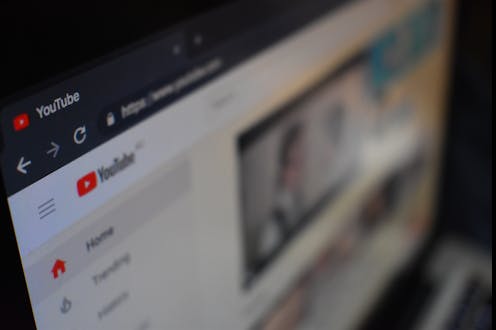Videos won't kill the uni lecture, but they will improve student learning and their marks
- Written by Michael Noetel, Senior Lecturer in Psychology, Australian Catholic University

In response to COVID-19, almost every university has scrambled to move its teaching online.
To do this, academics have been choosing between two approaches: live videoconferencing using tools such as Zoom, or pre-recording videos and posting to platforms such as YouTube.
Previous reviews have shown videoconferences are an okay substitute for classes, but what about videos?
What do students say?
Previous reviews have looked at student preferences for online learning as opposed to face-to-face lectures and they do not find any differences. Even when teachers make monumental efforts to create flipped classrooms, where they provide online videos before interactive workshops, there are no differences in student satisfaction.
Read more: Lab experiments in the pandemic moved online or mailed home to uni students
So students don’t mind whether they learn online or face-to-face. We academics care about satisfying students, but we also want to make sure students learn new things.
Student learning is totally unrelated to student satisfaction. Student satisfaction is more closely related to their teacher’s physical attractiveness. So we wanted to see whether videos increased or decreased student learning for mugs like us.
Videos improve learning
We did a systematic review to see what happens when videos replace classes. We searched for every best-practice study that measured learning after university students were given videos.
To make sure we were looking at real learning differences, not just student preferences, we excluded studies that only asked for opinions and those that were not randomised.
We found more than 100 studies. A quarter gave videos in addition to existing content. As you’d expect, students who got extra content learned more.
This means teachers giving face-to-face lectures can significantly improve student learning by also offering videos (before or after class). When videos accompanied existing methods, there were huge benefits for student learning.
But what about when we swapped existing face-to-face learning for videos, as many teachers are now having to do?
We found 83 studies that replaced some type of teaching with videos. About 75% of the time students learned more when given a video instead of a class.
On average, the effects are small (about +2 marks) but consistently favour videos. Effects are much larger when videos replace books (+7 marks), or when videos are used to teach skills (+6 marks) instead of knowledge.
It didn’t matter if the videos were swapped for lectures or tutorials. It didn’t matter if the videos were used for one lesson or a whole semester. And it didn’t matter if the exam was right after the video or at the end of the semester.
We found videos were consistently good for learning. There are several reasons for this and they can help us give better face-to-face classes too. Here are a few video tips from what we discovered.
Tip 1: videos use multiple forms of media
Students have two main channels for learning: what they see and what they hear. This is why videos worked much better than books, websites or podcasts, because these only use one channel whereas video uses both.
On video, teachers can edit themselves to best use both channels, by showing useful visuals that are perfectly timed to the spoken explanation. Great teachers do this in lectures as well, but it’s harder when you can’t edit out your mistakes.
This video shows how academics can improve their classes with well-time uses of multiple forms of media.Tip 2: videos give students control
Videos allow for students to control how fast they learn. They can speed us up, slow us down, stop to take notes or have a break for a coffee.
This lets students master content without getting overwhelmed (good lecturers do this too).
Mastery learning – where students progress at their own pace once competent – has been around for a long time and been shown to improve learning in higher education.
Khan Academy is an excellent example of mastery learning in schools.Tip 3: videos make learning authentic
Videos can show things more authentically than lectures can. In person, lectures can make learning authentic through role playing and simulation. Lectures can be authentic by bringing in guest speakers: for example, we used to bring in clients who had Parkinson’s to talk to students.
But videos help achieve even this kind of authenticity. Instead of burdening clients every year, we recorded interviews with clients so students could learn from them for years to come.
On video lecturers can also show real situations not possible in class, such as CPR (cardiopulmonary resuscitation), surgery or construction. Making learning authentic helps motivate students and stimulates learning.
Only some physics students were in the right place at the right time to see the 2017 solar eclipses, but all of them can study it on video.Tip 4: videos make learning interactive
Interactivity is also critical for learning. Lecturers can make classes interactive through open-ended questions, pop quizzes and small-group discussions.
But we found video is usually as interactive, or more interactive, than most lectures. That’s because most lectures aren’t that interactive. There are many technologies (try EdPuzzle or H5P) that let staff easily embed questions and feedback in videos.
Edpuzzle is one of many free platforms for adding interactivity to videos for online learning.Read more: Universities need to train lecturers in online delivery, or they risk students dropping out
When things get back to normal (whatever that is)
Academics shouldn’t feel like they’re wasting their time by making lots of videos this year. Students are probably learning more, and when face-to-face classes get back to normal, the videos will be a great asset for years to come.
We don’t want to be replaced by a YouTube playlist, but parts of our teaching are probably better that way.
Are university classes better on YouTube?Authors: Michael Noetel, Senior Lecturer in Psychology, Australian Catholic University





